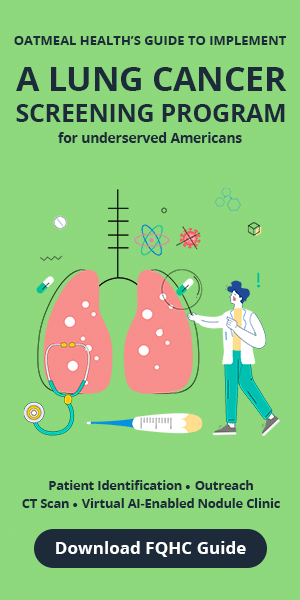Share this article and save a life!
What do you think of when you think about going to the doctor’s office? You probably think of a clean room, a bed with a white sheet on it, and a man or woman wearing a white coat talking to you.
Does an iPad screen enter your thoughts? Probably not but perhaps it should. Telehealth is one of the fastest-growing sectors of healthcare; according to the American Medical Association, it was already outpacing other sectors pre-COVID. The onset of the pandemic saw an explosion in telehealth services, as offices and clinics had to rapidly adjust to a locked-down world.
As an emergency medicine physician, I never imagined that I’d be a part of the telehealth wave. After all, you need to be there to properly diagnose a patient’s heart attack or put their broken bone in a cast. Yet, even in my short career, I’ve had the opportunity to work on two different telehealth platforms.
One was an entirely text-based platform while my current position involves video interaction with patients. Through interacting with patients virtually, I’ve seen both the promises and the pitfalls of delivering healthcare virtually.
Based on my experiences, here are 4 strategies for you to maximize your telehealth platform’s effectiveness.
1. Find your niche
The healthcare system is a vast web of interconnecting parts, each with highly skilled yet distinct roles. The role that a primary care physician fills for a patient’s health is much different than the role an orthopedic surgeon fulfills. As a result, each specialty has a unique set of needs that could potentially be fulfilled by a telehealth platform.
Understanding the role that your telehealth platform seeks to fulfill is vital to ensuring its success. To start, you must find a niche that needs to be filled. Of course, your niche must be easily definable with achievable goals.
At the first telehealth company I worked for, our mission was to reduce lower acuity emergency room and urgent care visits. To my knowledge, no other telehealth company was working in that space, at least locally.
If we could handle it online, we tried to do so to prevent those patients from going to an ER. Everything we did was designed to meet this mission: we wrote work notes, refilled home medications, and even prescribed antibiotics if we felt it was appropriate.
Of course, we never tried to expand beyond our niche. We were there to help with immediate problems; we were not there to replace the patient’s primary care doctor.
Occasionally, patients would ask if we could adjust their insulin dose or if they could do their yearly check-ups over our platform. We politely informed our patients that, while we were happy to help them with things like refills of previously prescribed medicine, we were not a surrogate for their primary care doctor.
Finding your niche, and not trying to overreach it, sets clear expectations for what your providers can and cannot do. This will help both your providers and patients know what is and is not reasonable for your platform to accomplish.
2. Get the Providers to believe the mission
Finding a niche is an important first step but it’s equally important to finding physicians and other healthcare providers who believe in the mission to staff the service. Keep in mind that, for many of us in healthcare, telehealth is a brand-new experience for us. When I was in medical school, I got no training on how to provide care virtually. This leads to some initial discomfort for many of us when asked to do something that goes against all of our training.
When I was first asked to provide care over an entirely text-based platform, I thought the idea was insane.
How can you provide care for a patient without seeing them? Or listening to their heart or lungs? Yet, I agreed to do it because I believed in the mission. As an ER physician, the goal of reducing lower acuity ER visits struck a chord with me. Keep in mind, we were working during the height of the Omicron and Delta surges when ERs were being overwhelmed with critically ill patients. Every patient I kept out of the ER felt like a tremendous victory for me; I knew my work was helping my colleagues manning the ERs.
It was also nice to know that, when I was working in the ER, someone was trying to divert patients for me.
I don’t know how many patients the company kept out of ERs. I’m sure they tracked that information, but it was never shared with me. Yet, to me, any patient interaction that ended with me being able to solve their problem was a success. Even if I only helped one patient during a shift, I knew that that was one less patient who would be walking into a waiting room.
As an ER physician, I believed in the mission of that telehealth company. I knew what it meant and what a difference I could make. I genuinely don’t think the platform would have worked if other physicians had been asked to run it. Redirecting patients from the ER doesn’t mean the same thing to a radiologist as it does to an ER physician.
For me, the mission was personal, and I had an incredibly high esprit de corps as a result.
3. Know your limitations
I’ve become a big believer in telehealth and the promise to expand access to medical care that it offers. Yet, I also know that there is no substitute for being able to personally examine a patient; to listen to their heart and lungs. To press on their abdomen. Nothing, in my opinion, will ever completely replace the need for an in-person physician. Thus, it’s important for any telehealth platform to recognize what its limitations are.
Obviously, for the text-based platform, I could not personally evaluate my patients. I had to make our decisions based solely on what my patients typed out for me. That was fine for patients who needed refills of their blood pressure medicine or wanted to know if they needed antibiotics for their cold (usually not). However, there were real limitations to that method of delivering patient care. Without the ability to examine a patient, or order and interpret tests, I couldn’t say whether a patient’s chest pain was due to indigestion or a heart attack.
My goal was to keep patients out of the ER but that didn’t come at the expense of patient safety.
If necessary, I would tell patients that they needed to go to their nearest ER for an immediate, in-person evaluation. My bosses never objected to this; in fact, they encouraged me to make any recommendation that I felt was in the best interest of the patient.
The goal may have been to keep patients out of the ER but nothing can come at the expense of patient safety.
Understanding the limitations of a telehealth platform, be it text or video-based, and supporting your providers when they inevitably run into those limitations, is crucial to ensuring both patient safety and provider satisfaction.
4. Be upfront about what you will not do
One area I think my former employer could have improved was being more direct with patients about what the platform would not do. Our platform had a very strict policy that we weren’t to prescribe controlled substances virtually. I did not object to this; I did not think it was appropriate for me to give out those medications to a patient I had never met and would likely never interact with again.
However, I don’t think that restriction was ever communicated to patients using our platform. Or if it was, it was not done so in an effective way.
Typically, on every shift, I’d have at least one patient who would ask me to prescribe a controlled substance. I politely informed them that I could not do this, and in fact, the platform had a dot phrase I could use for this. However, that should not have been my job as a physician. Any telehealth platform will likely have restrictions on what it allows its providers to do. These should be communicated to the patient in a clear and direct way.
It’s possible that my old company did inform patients of the restrictions on prescribing controlled substances, however, it clearly was not done effectively given how often I encountered patients requesting that service. Instead, I was often the one who dealt with the patient’s ire when I informed them of our company’s policy.
Clear communication with patients regarding the limits to the services you’re willing to provide is critically important. Not only will it set clear expectations and lead to less confusion for your patients, it will also lessen the burden on your patient-facing providers.
Wrapping it Up
Telehealth has the power to radically transform how we deliver healthcare in this country and is already starting to do so. Yet, currently, there are still limitations to what can safely and appropriately be done over a virtual platform.
Finding your niche can help you identify the physicians most likely to identify with your mission. Understanding your inherent limitations, communicating them to your patients, and supporting your providers through them, will lead to a platform that both patients and providers feel comfortable and confident using.
Share this article and save a life!
Author:

Dr Greg Jasani, MD is an emergency medicine physician who lives and works in Maryland. He obtained his MD from George Washington University before completing his residency at the University of Maryland Medical Center. He has worked in academic, private and federal hospitals throughout his career. His writing has been featured in the LA Times, Baltimore Sun, STATNews, MedPage Today, and KevinMD. He is committed to finding new and innovate solutions to improve access to healthcare in this country.
REVOLUTIONIZING CANCER CARE
A Step-by-Step FQHC Guide to Lung Cancer Screening
The 7-page (Free) checklist to create and launch a lung cancer screening program can save your patients’ lives – proven to increase lung cancer screening rates above the ~5 percent national average.
– WHERE SHOULD I SEND YOUR FREE GUIDE? –





